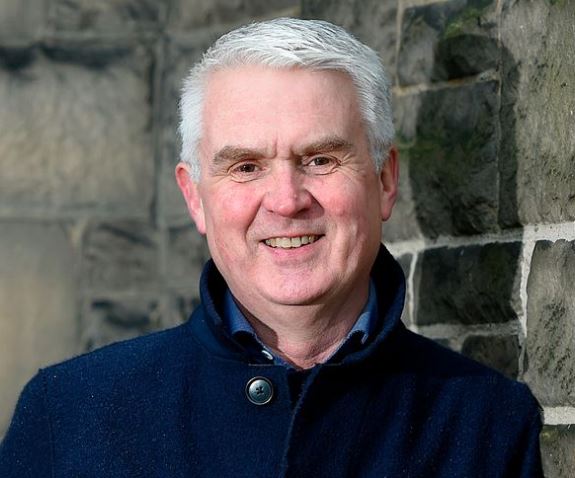 In the dead of night over Christmas 1988, I became aware that hardly any of my fingernails had a lunula. I was 27. Until that very moment, their absence had completely passed me by.
In the dead of night over Christmas 1988, I became aware that hardly any of my fingernails had a lunula. I was 27. Until that very moment, their absence had completely passed me by.
A lunula is the half-moon shape at the base of your nail, just above the cuticle. The realisation came as I was reading Paul Monette’s memoir, Borrowed Time, which had been published earlier that year. Borrowed Time is about AIDS, more specifically Monette’s experience of caring for his friend Roger Horwitz through the last years of his life.
Reading it was taking a risk. I had met my late partner, Lawrence, in 1985 and just weeks into our relationship he revealed that he had been diagnosed with HTLV3 (HIV) the previous year. Three years into our relationship, we were on a journey neither of us could quite comprehend, let alone predict.
The uncertainty had already taken its toll. We had bought a house in London together the previous year and loved each other very much. But the omnipresence of HIV made our relationship a kind of ménage à trois. A volatile arrangement at the best of times, the more so when your lover’s lover is a deadly virus (as it was back then).
That Christmas, Lawrence had taken himself off to Key West, while I had gone on a rather more modest trip to stay with friends in Manchester. Borrowed Time was scarcely reading for a merry Christmas, but it felt urgent — as if it could provide some clues as to what might happen to us next. They were in precious short supply.
A third of the way into the book, Monette recounts the moment where Horwitz’s doctor, Peter Wolfe, remarks that the moons had disappeared from his nails. It was a ‘curious minor feature of the disease’ Wolfe said but Monette recalls being ‘jarred’ by the idea of it. It indicated, he thought, ‘how very subtle the virus was, casting its shadow in places that had no pain or symptoms, no reason at all except to be bizarre.’
As I read the words, I looked down at my fingernails under the lamplight. No moons. Surely there must be moons. I turned the overhead light on to take a closer look. Still no moons. Like so many gay men at the time, I had become accustomed to checking my body for red blotches and swollen glands.
But moons? That was something completely new. Had they ever been visible? No amount of wracking my brains would answer that question. Part of me knew my sudden anxiety was a fool’s errand.
I had been tested several times since Lawrence and I met. The wait for results was a couple of weeks in those days leaving plenty of time for paranoia to get a grip. But each test had come back negative. For Lawrence, who lived with the virus in his body, not just his imaginings, my flights of fancy were often an irritant and his impatience with them thinly disguised.
It’s A Sin, broadcast for the first time a year ago this weekend, brought the moon moment back in a flash. As Ritchie Tozer examines his back in the mirror for signs of Kaposi’s sarcoma, thousands of gay men like me glanced over our shoulders at the hidden rituals which beset us during the plague years.
It was one of so many aspects of Russell T Davies’ drama that spoke truth to our experiences, largely hidden from view for the best part of four decades. I lost count of the number of times friends told me during the airing of the series that they had no idea any of it had happened at all. Even for those who were around, aside from the infamous tombstone adverts, AIDS had quite simply passed many of them by.
For those of us who loved and lost in that plague, It’s A Sin was not merely a reminder of those years but a vindication, a reckoning even. As I wrote in the immediate aftermath of the series broadcasting, it was dramatic art as redress. Late — very late, too late — it told our story and memorialised those we lost. It gave a voice to those who didn’t make it.
And, perhaps most poignantly, it did so by telling the story away from the drama. As Tortoise’s Liz Moseley said in her review of the show, the real story of plagues happens ‘in the quiet and the banal.’ The power of It’s A Sin was the way that it revealed ‘a lot about then and now — including (like the moons on my fingernails) things that seldom get noticed.’
In that sense, it stands alongside, albeit decades apart, the mighty contributions of the likes of Monette, and Mark Doty in his 1996 memoir, Heaven’s Coast. And perhaps most of all, Larry Kramer’s ‘howl’ of a play, The Normal Heart, which was so brilliantly revived at the National Theatre last year.
The snippets from the reviews of Borrowed Time which feature on its back cover refer to it as ‘the first full account of the day-by-day dilemmas of AIDS,’ a book which ‘brings the plague years home as no other book.’ It is, one of them goes on to say, impossible to read without weeping, without vowing never to turn away from such suffering.’
And yet in the UK turn away we did — until Davies brought millions face to face with what happened. That he did so amidst the rupture of another plague, one which some of us have said from the start resonated like a drip-feed, made it more relevant than he could ever have imagined.
As Moseley said, It’s A Sin deserves to ‘linger in our collective memory’ not just as dramatic achievement, but as an ‘artefact of modern cultural history.’ I agree — and I hope it does.
For me, and I am sure I’m not alone, It’s A Sin does more than linger. Like the plague itself, it is imprinted indelibly on my consciousness. To borrow a phrase from E.E. Cummings’ poem, read the day Allan and I married in 2017, I carry it in my heart.
